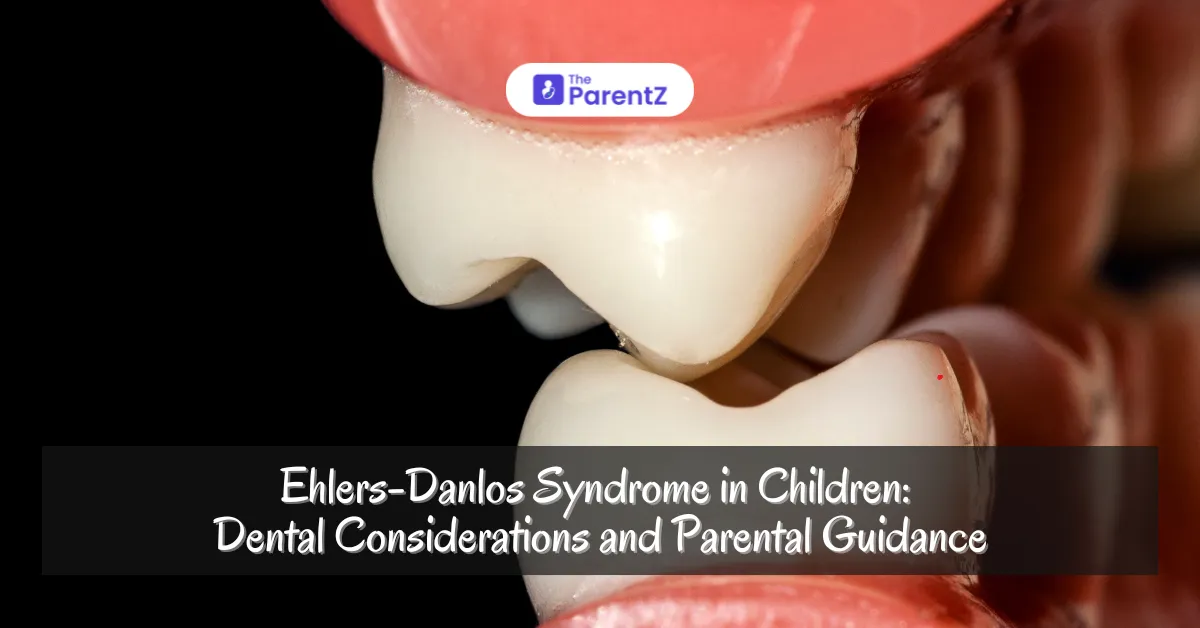Ehlers-Danlos Syndrome (EDS) is a group of genetic connective tissue disorders that affect the skin, joints, and blood vessels. This condition can lead to various dental challenges in children, including oral health issues and difficulties with dental procedures. Understanding the implications of EDS and recognizing its signs are vital for timely intervention. Parents play a crucial role in ensuring their child receives appropriate care and support.
Understanding Ehlers-Danlos Syndrome in Children
Ehlers-Danlos Syndrome is caused by mutations in genes that affect collagen production, leading to weakened connective tissues. There are several types of EDS, with varying degrees of severity and symptoms. Common features include hypermobility of joints, skin that is easily bruised or stretchy, and a tendency to develop scars easily. The connective tissue abnormalities associated with EDS can also have implications for dental health and procedures.
Dental Implications of Ehlers-Danlos Syndrome
Children with EDS may experience a range of dental issues due to the effects of connective tissue on the oral cavity. Some common dental implications include:
•Gum Disease: Children with EDS are more prone to gingival hyperplasia (enlargement of the gums) and periodontal disease due to fragile tissues.
•Delayed Healing: EDS can lead to slower healing after dental procedures, making it essential to manage treatment carefully.
•Tooth Mobility: The laxity of connective tissues can cause teeth to become loose or shift, leading to misalignment.
•Dentinogenesis Imperfecta: Some children may develop this condition, resulting in discolored and brittle teeth.
•Oral Pain: Frequent joint pain can extend to the temporomandibular joint (TMJ), causing discomfort during chewing or dental treatments.
Signs to Look For
Recognizing the early signs of Ehlers-Danlos Syndrome in children is crucial for prompt diagnosis and intervention. Common signs include:
•Joint Hypermobility: Children may have unusually flexible joints, which can lead to frequent sprains or injuries.
•Skin Elasticity: The skin may appear soft, stretchy, or fragile, with an increased tendency to bruise easily.
•Frequent Joint Pain: Children may report persistent pain in their joints, particularly after physical activities.
•Delayed Wound Healing: Cuts or surgical sites may take longer to heal than expected.
•Dental Issues: Watch for gum problems, loose teeth, or signs of pain during chewing.
What to Do When You Notice These Signs
If you observe symptoms indicative of Ehlers-Danlos Syndrome, it’s essential to consult a pediatrician or a genetic specialist. Diagnosis typically involves a physical examination, family history assessment, and genetic testing to identify specific mutations.
After diagnosis, it is vital to work closely with a team of healthcare providers, including dentists familiar with EDS. Children with EDS may need specialized dental care to manage gum health and ensure that procedures are performed with minimal trauma. Preventive care, including regular dental check-ups and cleanings, is essential for maintaining oral health.
A Note to Parents
Caring for a child with Ehlers-Danlos Syndrome can be both rewarding and challenging. It’s crucial to remain informed about the condition and advocate for your child’s needs. Encourage open communication with healthcare providers, ensuring that any dental or medical concerns are addressed promptly.
Incorporate gentle dental hygiene practices at home, using soft-bristle toothbrushes and fluoride toothpaste to minimize discomfort. Additionally, educate your child about their condition so they can express their needs and concerns regarding pain or discomfort effectively.
Support groups and online communities can provide valuable resources and connect you with other families facing similar challenges. Building a supportive network can help both you and your child navigate the complexities of living with EDS.
Conclusion
Ehlers-Danlos Syndrome presents unique challenges for children, particularly concerning dental health and care. Early diagnosis and intervention are critical for managing these challenges effectively. By recognizing the signs of EDS and collaborating with healthcare providers, parents can help their children maintain good oral health and thrive despite the challenges posed by this connective tissue disorder.








Be the first one to comment on this story.